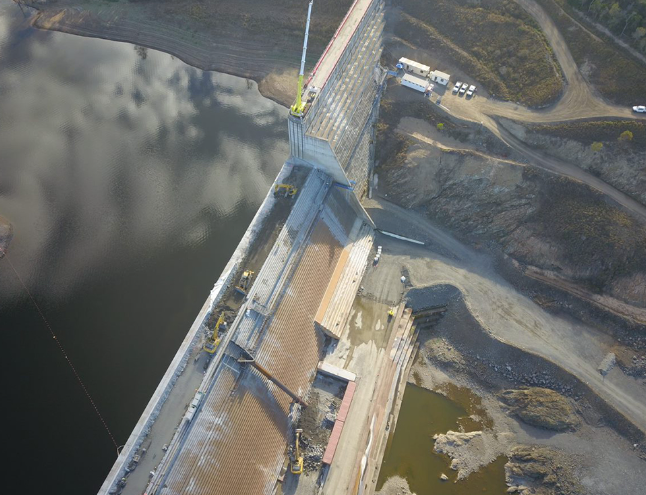A new Paradise Dam wall will be built further along the Burnett River in Queensland after new problems were identified with the troubled dam’s concrete.
The 3000 megalitre roller-compacted concrete (RCC) gravity dam was constructed by the Burnett Water Alliance 80 km south-west of Bundaberg in 2005 with a dam wall of 37.1 m, 600 m wide. Just 14 years later, the dam was found to be at risk of collapse so the water level was dropped to 42% and the dam wall was to be lowered by 5.8 m.
The plan had been to restore Paradise Dam to its original height and capacity but, “three unexpected new issues have been identified regarding the long-term strength and quality of Paradise Dam’s concrete, stemming from its original construction,” Sunwater stated last week.
Results from a world-first concrete loss of strength testing program in recent years showed the dam was built “with a far higher percentage of clay than the vast majority [of] other [900] RCC dams in the world”.
The “unprecedented” issues according to Sunwater are “swelling clay, cement leaching and carbonation” as dams are not usually tested for long-term strength loss.
The water service provider declared there is “no doubt” the dam is “a compromised asset and that no amount of improvement work will fix the existing dam”. It has appointed CPB Contractors, Georgiou, and GHD to “ensure design and construction challenges are considered and addressed early” for the new dam.
“As Paradise Dam was only constructed 18 years ago … it should not be experiencing issues of this degree,” Sunwater said.


